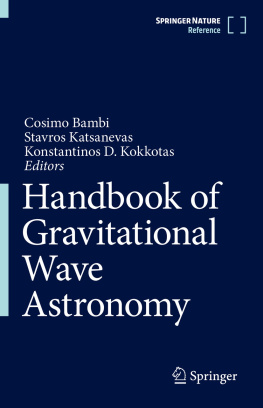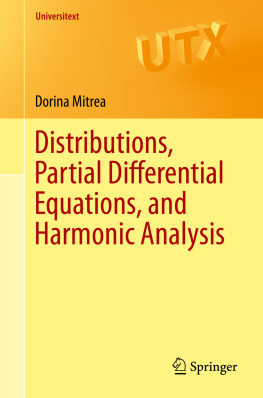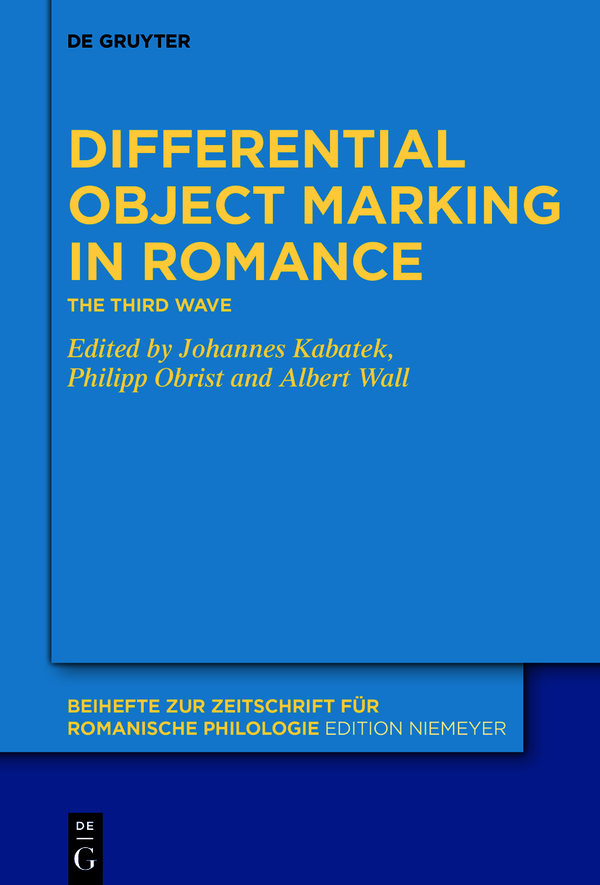Preliminary remarks
Recent years have seen increased research interest in Differential Object Marking (DOM, Bossong 1982; 1985; cf. also Bossong, this volume). DOM is not only the subject of specialized workshops but also figures frequently at conferences on language typology, generating an enormous body of published work, so that it becomes more and more difficult to maintain an overview. Rather than adding new complexity to this picture, the present volume brings DOM back to its origins, the Romance languages, and aims to deliver fresh insights arising from new data, new methods, and new theoretical approaches.
If we consider the history of studies on DOM in Romance, we can identify three different phases or waves of studies (the allusion to Eckert 2012 is intended). The first could be called the prehistorical one, referring as it does to studies about the phenomenon prior to the terminologization proposed by Bossong. These studies refer to DOM in the Romance languages generally as prepositional accusative, and they should not be ignored by contemporary research: some pioneering studies (such as the explanations of Spanish DOM in Bello 1847 or Lenz 1920) are still relevant today and contain important intuitions. In this phase, DOM is considered mainly as a typical Romance evolution emerging from the Latin preposition ad (with the particular and well-known deviation of Romanian), and research focuses on the functional status or on diachronic evolutions in one language or in the language family. The second wave could be called the phase of typologization, after Bossongs claims about DOM in the early 1980s, and opens the discussion to the languages of the world. DOM is not only a Romance phenomenon but can be found widely, and DOM in Romance is not necessarily only an internal feature but may also be conditioned or catalyzed by contact with languages such as Hebrew. Typologization also means that research on DOM moves from a semasiological, language-specific view to an onomasiological perspective and to general principles of grammaticalization. Thus it was recognized that DOM grammaticalizes similarly in very different languages, with the two factors of animacy and definiteness being the most determinative. And DOM as a general marking strategy does not depend on a prepositional marker, but may be expressed through different devices.
What, then, is the third wave like? In Romance linguistics, there are two main directions for recent studies on DOM. On the one hand, researchers go back to apparently established issues and take a closer, more fine-grained look at the data. Typological generalizations have opened up new perspectives, but in doing so they have also broadened the horizon towards related phenomena. The interplay of different means of object differentiation within the same language is studied (e.g. clitic doubling or indexing vs. traditional flagging DOM, i.e. marking by an element that immediately stands by the object). Not only objects are considered; instead, whole constructions are also taken into account. And newly identified factors such as agentivity, telicity and affectedness are considered when looking closely at language variation. On the other hand, new methodological perspectives have been opened. In historical studies, the availability of large corpora makes it possible to work with comprehensive databases and to identify statistically relevant factors, while in studies concerning contemporary usage, experimental methods allow for controlled studies with fine-grained manipulations. In the next Section, we will introduce current issues that characterize the third wave of DOM studies in Romance: the debate about the general concept (2.1), the conditioning factors (2.2), more fine-grained and comparative approaches to variation (2.3) and to contact (2.4), and methodological innovations (2.5). Section 3 then relates the contributions of this volume to the issues introduced in Section 2.
Current issues in the studies of Romance DOM
2.1 What is DOM and what is it not?
In his contribution to this volume, Bossong points out that a crucial moment in his attempt to understand the Spanish prepositional accusative (1) was to look at it from a rather abstract perspective: differentiation of elements within one syntactic function or argument.
(1)
a.
| Veo | */a | la | guitarrista. |
| see. prs .1 sg | dom | the. fem | guitar player |
b.
| Veo | /*a | la | guitarra. |
| see. prs .1 sg | dom | the. fem | guitar |
This differentiation is conditioned by a number of factors, but rather than getting lost in the complexity of the interaction of the different factors, Bossong highlights the availability of a differentiation device. From this general perspective, the device marks prominent (or non-prototypical) objects. Such devices exist in a series of Romance languages whose grammatical characteristics overlap to different degrees. This group consists of varieties of Portuguese, Spanish, Catalan, Sardinian, Italian, Rhaeto-Romance and Romanian. With the exception of Rhaeto-Romance, all these languages are discussed in the present volume and exemplification can be found in the respective chapters.
Bossongs abstract conception at the same time serves quite well as a comparative concept for typology (Haspelmath 2010), and soon many other languages with such devices were discovered, by Bossong and other researchers. It also was pointed out that such differentiation also exists for subjects in some languages (Differential Subject Marking) and both notions were brought together under the term Differential Argument Marking (DAM, cf. Witzlack-Makarevich/Serant 2018 for an overview). In typology, the notion is usually understood in a broader sense than in Bossongs work, where the device is characterized by traditional conditioning factors (above all, animacy and definiteness), a morphological marker (so-called grammemic marking) and certain grammaticalization paths. The success of the broader application of the term in typology, and the discussion of more and more grammatical configurations as instances of this very same sort of device, made it necessary at some point to introduce entire DAM typologies (Witzlack-Makarevich/Serant 2018). Eventually, the broader approach made its way back into Romance linguistics. Bossong himself had already identified clitic doubling as a second DOM system in Spanish. More recently, other phenomena from the object domain have been added and discussed in terms of DOM, including Spanish







